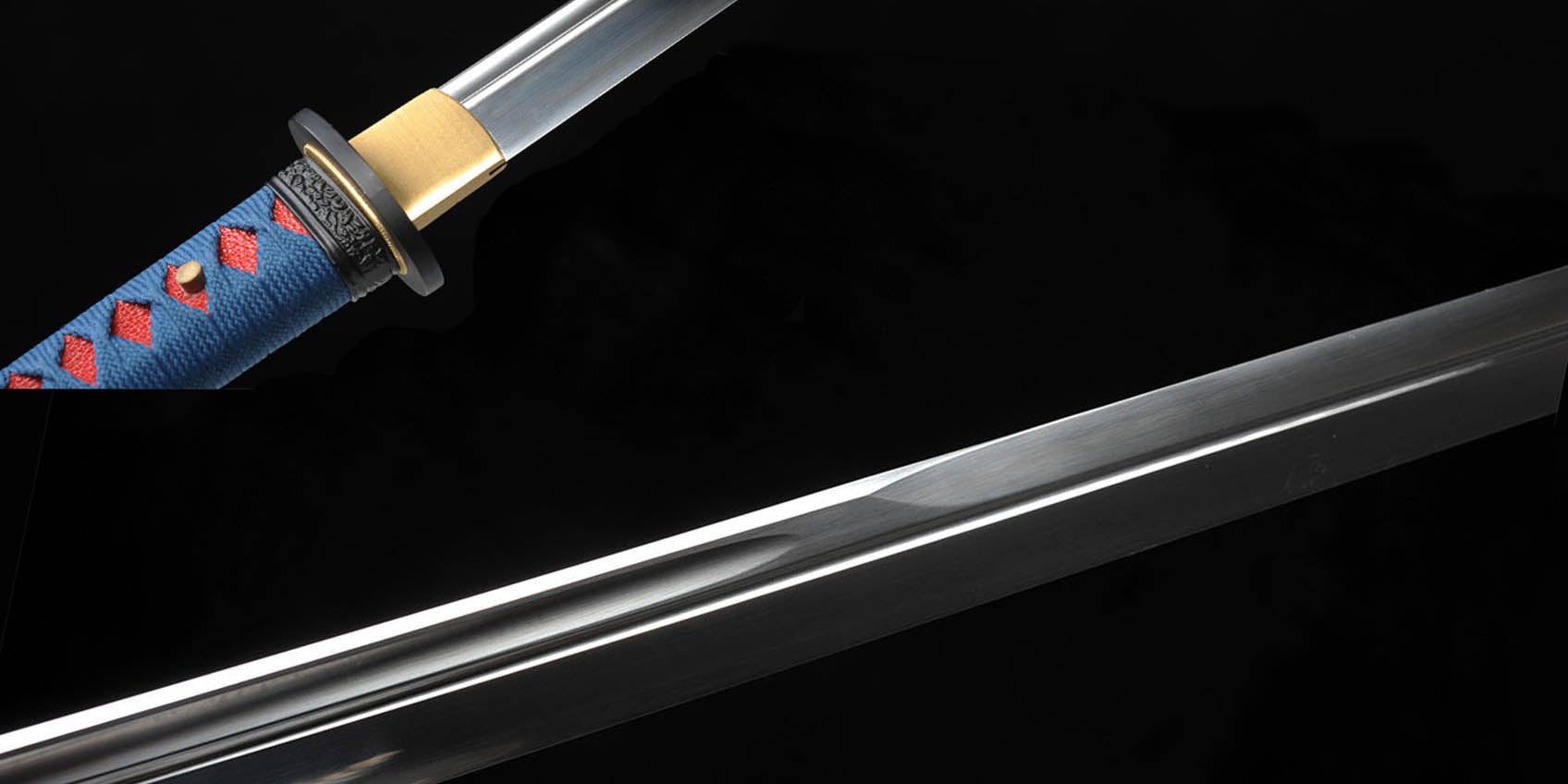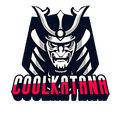Differences Between Straight-Edge Katanas and Curved Katanas

Katana vs Samurai: Differences Between Straight-Edge and Curved Katanas
In feudal Japan, samurais and ninjas relied on various traditional Japanese swords as their primary weapons in battle. Among them, the katana, a type of samurai sword, became the most iconic. However, not all katanas had the same shape—some were straight-edged, while others had the signature curved blade.
A curved katana was the preferred choice for most of the warrior class, as its design allowed for smoother, more efficient cuts, making it ideal for slashing in combat. In contrast, a straight-edge katana functioned more like a thrusting weapon, similar to the edged blades used by earlier samurai. While most samurai would carry a katana, ninjas often used shorter, single-edged swords or even a small dagger for stealthier engagements.
These weapons of war were crafted with specific combat styles in mind. The curved katana excelled in duels and horseback combat, while the straight-edge katana had its place in direct, armor-piercing strikes. Regardless of shape, both remained symbols of Japan’s legendary warrior tradition.
Differences Between Straight-Edge Katanas, Curved Shortswords, and Curved Katanas
When comparing straight-edge katanas, curved katanas, and curved shortswords, there are notable differences in design and functionality that cater to various combat needs. The curved katana, with its distinct curvature, is optimized for close quarters combat. The curve enhances slashing power, allowing for fluid, sweeping cuts that are effective in fast, close-range encounters. The design of the blade supports smooth, continuous motion, making it ideal for the samurai’s traditional cutting techniques.
On the other hand, straight-edge katanas are less common but offer a more straightforward approach. Their flat blade is better suited for thrusting attacks, providing more forceful and precise piercing strikes. While lacking the cutting advantage of a curved blade, straight-edge katanas excel in combat situations where thrusting, blocking, and quick reactions are needed.
Curved shortswords, such as the ko katana or wakizashi, offer a similar curved design but in a smaller form. Their compact size makes them perfect for close-quarters battles, and their curved blade allows for swift, agile cuts in confined spaces. The shorter length gives them an advantage in tight environments where maneuverability is key.
Each type of sword—whether the straight-edge katana, curved katana, or curved shortsword—has its specific advantages, depending on the combat scenario. Whether it's for powerful sweeping slashes, precision thrusts, or quick, agile strikes, these swords offer unique characteristics that cater to different fighting styles.
When it comes to the world of Japanese swords and martial arts, the katana is often seen as the epitome of craftsmanship and sophistication. Renowned for its sharpness and beautiful design, the katana sword has a rich history and continues to captivate enthusiasts around the world. However, not all katanas are created equal. In this article, we will explore the differences between straight-edge katana swords and curved katana swords, with a focus on the exceptional brand COOLKATANA.
Why does the katana have a curve?
Why are katanas curved?
The katana curve plays a crucial role in its functionality, performance, and cultural significance. This distinctive curve, known as the "sori," is designed to enhance the cutting ability of the sword. Meanwhile, traditional rounded swords, though lacking a noticeable curve, have a smooth edge design that offers a different cutting and handling experience. Here are the key reasons behind the curve in a katana and the features of rounded swords:
-
Improved Cutting Motion: The curve allows for a smooth, continuous motion when drawing the sword and executing a cut, a technique known as "iaijutsu" or the art of the quick draw and strike. The curved blade of the katana aids in achieving a more fluid cut, making it more efficient than a straight blade. In contrast, rounded swords typically don’t offer the same cutting advantage but are designed for circular swings, making them suited for different types of combat.
-
Balance and Efficiency: The curve in the katana helps distribute the weight of the sword, making it more balanced during use. This balance allows the wielder to maintain control during fast, fluid movements, especially when transitioning between drawing, cutting, and sheathing. Rounded swords, by design, tend to be simpler and balanced for long, continuous swings, distributing force more evenly across the blade.
-
Forging Technique: The curve in a katana is a result of the traditional forging process, where heating and cooling techniques naturally form the curvature. This process, combined with folding the steel, increases the blade’s strength and flexibility, making it durable and resistant to breakage under pressure. While rounded swords have simpler forging techniques, their smooth edges are also designed to provide consistent cutting force and durability.
-
Cultural and Aesthetic Significance: Beyond functionality, the curve of the katana holds deep cultural and symbolic meaning. It represents the fluidity and grace of the samurai’s movements, reflecting the philosophy of bushido (the way of the warrior). The sleek and elegant appearance of the katana also symbolizes craftsmanship and status. On the other hand, rounded swords tend to emphasize utility and strength over aesthetics, representing a direct, no-nonsense approach to combat.
In short, the curve of the katana enhances its cutting ability, providing a balanced and efficient design for skilled users, while rounded swords offer stability and practicality for different combat styles. Both have their merits, but each deeply reflects its respective cultural and historical context.
Shape and Design: Realistic Katana Comparisons
The most apparent difference between straight-edge katana swords and curved katana swords is their shape and design. While both swords share the characteristic slender and curved blade, the straight-edge katana features a blade with a perfectly straight cutting edge, while the curved katana adopts a slightly concave cutting edge. This small variation in shape can significantly impact the performance and functionality of the sword.
COOLKATANA, a leading brand known for its high-quality and realistic katana swords, offers both straight-edge and curved katana swords to satisfy the preferences of different martial arts practitioners. The straight-edge katana models, such as the COOLKATANA Straight-Edge Masterpiece, are meticulously crafted to ensure a precise and uniform cutting edge. This design makes it ideal for practitioners who value accuracy and a clean, straight cut in their training or demonstrations.
Combat and Techniques:
Another essential aspect to consider when comparing straight-edge katana swords to curved katana swords is their application in combat and different martial arts techniques. The slight curve of the traditional katana sword provides an advantage in slicing through opponents and delivering effective slashes. The curved design allows for better control and maneuverability, enhancing the swordsman's ability to execute swift and powerful strikes.
On the other hand, straight-edge katana swords, like the COOLKATANA Straight-Edge Warrior, cater to martial arts styles that require precision and controlled strikes. While the straight blade may not offer the same slashing capability as a curved katana, it excels in other techniques where accuracy and piercing power are vital, such as thrusting and piercing targets.
Aesthetic Appeal:
In addition to their functional differences, the aesthetic appeal of straight-edge katana swords and curved katana swords also sets them apart. The curved katana, with its graceful arc and flowing lines, exudes elegance and embodies the traditional image of a Japanese samurai sword. The curved blade is not only visually appealing, but it also serves a practical purpose by redistributing the force of a strike along the entire length of the sword.
Contrasting the curvature of the traditional katana, straight-edge katana swords possess a unique beauty of their own. The perfectly straight edge showcases the artistry and precision of the swordsmith's craftsmanship. COOLKATANA's straight-edge swords feature intricate designs etched onto the blade, enhancing their visual appeal while paying homage to the traditional aesthetic of Japanese swords.
In conclusion, the differences between straight-edge katana swords and curved katana swords extend beyond their shape and design. They impact the combat techniques employed, the martial arts styles suited for each, and even the aesthetic appeal. Whether you prefer the classic elegance of the curved katana or the precision of a straight-edge katana, COOLKATANA has a wide range of options to cater to your preferences and needs. So, whether you are a seasoned martial artist or a collector, adding a COOLKATANA straight-edge katana to your collection will undoubtedly bring a unique and captivating element to your arsenal.
